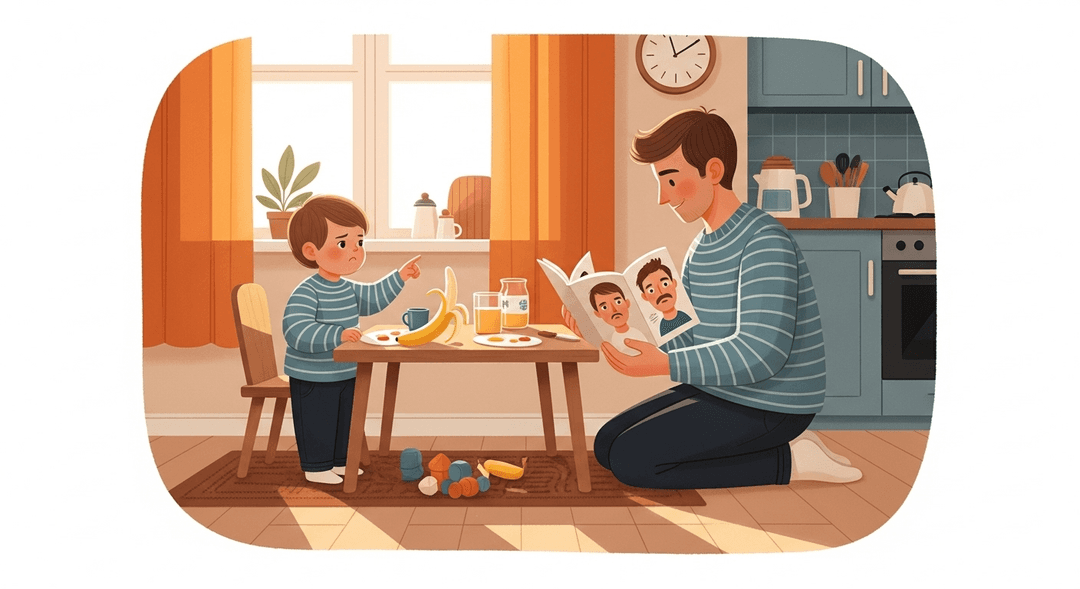Teach Emotion Vocabulary
Ever had a tiny person scream at you because their banana broke in half, and you’re like, 'Are we sad? Angry? Mourning the banana?' Welcome to the emotional guessing game! Teaching emotion words is basically giving your kid a cheat sheet for communicating instead of launching into interpretive dance tantrums. If you’re tired of playing 'What’s My Mood?' at 7AM, this one’s for you.
Naming feelings helps kids build emotional intelligence, which is science-speak for 'less likely to lose it over the wrong color cup.' It calms the amygdala (the brain’s fire alarm) and boosts self-regulation, so they can eventually say 'I’m mad' instead of throwing their shoe at your head. Plus, it helps you too—less guessing, more connecting.
How to do it
Start by naming your own feelings out loud, even if it feels silly. For example, say, “Daddy is frustrated because the remote disappeared again.” This helps your child see that it’s normal to talk about emotions.
Use books or cartoons to point out characters’ emotions. Ask your child how they think the character feels, and discuss why.
Keep a simple feelings chart on the fridge. Let your child point to the face that matches their mood. This gives them a visual way to express how they feel.
Don’t correct their choices—sometimes “excited” looks a lot like “about to lose it.” The important thing is that they are learning to identify and share their feelings.
Practice in calm moments, not just during meltdowns. This helps your child build emotional vocabulary when they’re not overwhelmed.
Celebrate every tiny step. Recognize their efforts to talk about feelings, no matter how small.
Key tips:
- Model naming your own emotions out loud.
- Use stories and media to discuss feelings.
- Provide a visual tool, like a feelings chart.
- Accept your child’s choices without correcting them.
- Practice regularly, not just in tough moments.
- Praise progress, however small.
